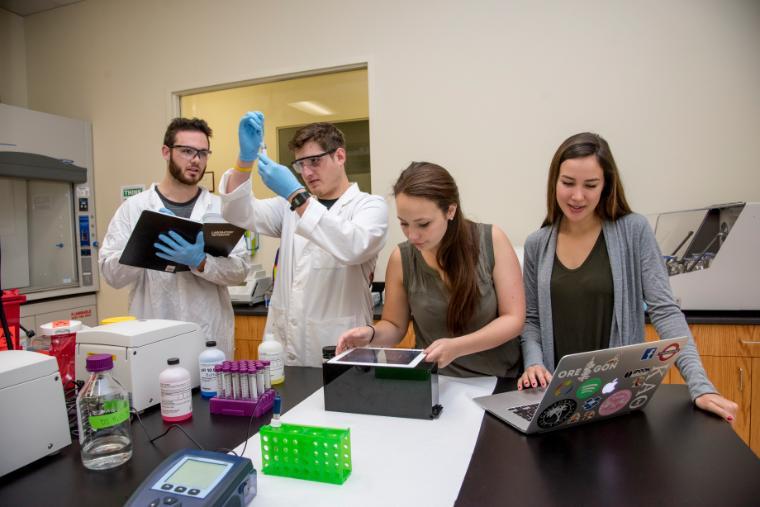
Collaboration Makes It Happen
A catchy (some might say brain-infiltrating) Sesame Street song celebrates the joys of collaborative effort: "Cooperation … makes it happen; cooperation … working together!" And perhaps it's only natural to recall this song when seeing what bioengineers Joseph Neumeyer and Jake Prince and web design and engineering seniors Amy Miller and Blair Koeneman have cooperated to create.
The interdisciplinary team of four has developed a tool called MUMS to help expectant mothers in remote areas access vital health screening. Silvia Figueira, Frugal Innovation Hub director and associate professor of computer engineering, matched the students up and advised Miller and Koeneman, while bioengineering Assistant Professor Unyoung (Ashley) Kim advised Neumeyer and Prince.
MUMS, or Mobile Urinalysis for Maternal Screening, brings the standardized analysis of urine test strips normally performed in urban medical facilities out to where women actually live, helping them identify bacterial infection, gestational diabetes indicators, and other biological markers indicating risk and the need for further medical attention. "Many women around the world have limited access to screening measures," said Prince. "They need to know when they should pursue medical care for issues that are easily addressed if caught early. We wanted to provide a healthcare tool that works in parallel with data access developments. Medical personnel are using tablets," he said, "so we created an efficient process that leverages technology to enable more consistent care throughout a pregnancy and over a patient's lifetime."
Here's how it works: The field medical worker's tablet is clipped to the top of a housing unit, into which a patient's test strip is slid. A photo of the strip is taken, and colorimetric analysis is performed using a mobile app, which also interfaces with a database that stores historical patient information. "Nowadays, it's almost impossible to have a project that doesn't include some type of computer engineering aspect; without the interface for the iPad portal, the device would not be functional," said Neumeyer.
Contributing to improved healthcare has been very rewarding for the web design engineers, who see opportunities for the project to expand. Koeneman said, "NGOs or other health agencies could use geotagging to mine and understand health trends stemming from these test results. Also, the test doesn't just have to be for pregnant women; it's particularly useful for them, but the system could be used for other tests."
Having the experience of working across disciplines was especially appealing for all the teammates. In fact, they expanded their network even further by enlisting the help of three non-engineer members of the Engineering World Health (EWH) student organization. Miller said EWH "assisted with identifying the target market and performed background research on how to implement. Their input helped guide our design." She added, "It's been really interesting working on an interdisciplinary project. Every time we get together as a team and start talking things through, the project just jumps ahead so much faster than when we're working on our own."
Sounds like cooperation really does make it happen!